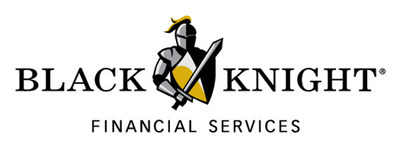
Black Knight's Mortgage Monitor: Tappable Equity Hit $4.7 Trillion in 2016, Highest Since 2006; 44 Percent of Q4 Refis Were Cash-Outs, Most Equity Drawn in Eight Years
PR Newswire
JACKSONVILLE, Fla., April 3, 2017
JACKSONVILLE, Fla., April 3, 2017 /PRNewswire/ -- Today, the Data & Analytics division of Black Knight Financial Services, Inc. (NYSE: BKFS) released its latest Mortgage Monitor Report, based on data as of the end of February 2017. This month, Black Knight revisited the equity landscape, finding that continued annual home price appreciation at the national level has helped to both further drive down the number of underwater borrowers and increase the level of tappable, or lendable, equity available to homeowners with a mortgage. As Black Knight Data & Analytics Executive Vice President Ben Graboske explained, today's equity landscape – in conjunction with a higher interest rate environment – will likely impact mortgage lending trends over the coming year.

"December 2016 marked 56 consecutive months of annual home price appreciation," said Graboske. "That served to not only lift an additional one million formerly underwater homeowners back into positive equity throughout the year, but also increased the amount of tappable equity available to U.S. mortgage holders by an additional $568 billion. There are now 39.5 million homeowners with tappable equity, meaning they have current combined loan-to-value (CLTV) ratios of less than 80 percent. Cash-out refinance data suggests that they have been increasingly tapping that equity, though perhaps more conservatively than homeowners had in the past. In Q4 2016, $31 billion in equity was extracted from the market via first lien refinances. While that was the most equity drawn in over eight years, borrowers are still tapping equity at less than a third of the rate they were back in 2005, and they're doing so more prudently. In fact, the resulting post-cash-out loan-to-value-ratio was 65.6 percent, the lowest on record.
"However, it's important to remember that we've also seen prepayment speeds – which are historically a good indicator of refinance activity – decline by nearly 40 percent since the start of 2017 in the face of today's higher interest rate environment. Given the fact that nearly 70 percent of tappable equity belongs to borrowers with current interest rates below today's prevailing 30-year interest rate, the incentive for many of these borrowers is shifting away from tapping equity via a first lien refinance and instead to home equity lines of credit. The last time interest rates rose as much as they have over the past few months, we saw cash-out refinances decline by 50 percent, but rate-term refinances decline by 75 percent. Based on past behavior, we may see a decline in first lien cash-out refinance volume, but it's still likely that cash-out refinances – and purchase loans – will drive the lion's share of prepayment activity over the coming year in any case. That's why it's so critical that those in the industry ensure that their prepayment models account for refinancing not just in terms of rate/term incentive, but also equity incentive as well. Additionally prepayment models will need a stronger focus on housing turnover as purchase transactions become a larger fraction of total prepayments."
Black Knight looked more closely at the nearly 40 percent decline in prepayment speeds thus far in 2017, finding varying degrees of impact by investor category, loan vintage and borrower credit score. While the GSE, FHA/VA, and portfolio markets have all seen prepayment activity decline between 41 to 43 percent since the start of the year, prepays on mortgages held in private-label securities have only dropped by seven percent. Likewise, prepayments on older loans – 2008 and earlier vintages – have only slowed by 11 percent, whereas 2014-2015 vintage loans have seen prepays drop by over 50 percent. Prepays on loans with borrower credit scores of 720 or higher dropped by 45 percent year-to-date, while those on mortgages with borrower credit scores below 620 declined by less than a quarter of that rate. The data also shows far more geographical diversity in 2017 than was seen in late 2016, with western states – along with Florida – leading the nation in prepayment rates. A correlation was observed between the states with the highest prepayment rates today and the lowest mark to market combined loan-to-value ratios, which would suggest that cash-out refinances may be driving a higher share of prepayment activity in these states. These states tend to have higher-than-average loan amounts for the most part, which may be a factor as well.
As was reported in Black Knight's most recent First Look release, other key results include:
| Total U.S. loan delinquency rate: | 4.21% MS, LA, AL, WV, NJ |
*Non-current totals combine foreclosures and delinquencies as a percent of active loans in that state.
**Seriously delinquent loans are those past-due 90 days or more.
Totals are extrapolated based on Black Knight Financial Services' loan-level database of mortgage assets.
About the Mortgage Monitor
The Data & Analytics division of Black Knight Financial Services manages the nation's leading repository of loan-level residential mortgage data and performance information on the majority of the overall market, including tens of millions of loans across the spectrum of credit products and more than 160 million historical records. The company's research experts carefully analyze this data to produce a summary supplemented by dozens of charts and graphs that reflect trend and point-in-time observations for the monthly Mortgage Monitor Report. To review the full report, visit: http://www.BKFS.com/CorporateInformation/NewsRoom/Pages/Mortgage-Monitor.aspx
About Black Knight Financial Services, Inc.
Black Knight Financial Services, Inc. (NYSE: BKFS) is a leading provider of integrated technology, data and analytics solutions that facilitate and automate many of the business processes across the mortgage lifecycle.
Black Knight Financial Services is committed to being a premier business partner that lenders and servicers rely on to achieve their strategic goals, realize greater success and better serve their customers by delivering best-in-class technology, services and insight with a relentless commitment to excellence, innovation, integrity and leadership. For more information on Black Knight Financial Services, please visit www.BKFS.com.
For more information:
| Michelle Kersch | Mitch Cohen |
To view the original version on PR Newswire, visit:http://www.prnewswire.com/news-releases/black-knights-mortgage-monitor-tappable-equity-hit-47-trillion-in-2016-highest-since-2006-44-percent-of-q4-refis-were-cash-outs-most-equity-drawn-in-eight-years-300433075.html
SOURCE Black Knight Financial Services, Inc.

Mehr Nachrichten zur BLACK KNIGHT FIN.SV.CL.A Aktie kostenlos abonnieren
(Mit der Bestellung akzeptierst du die Datenschutzhinweise)

Hinweis: ARIVA.DE veröffentlicht in dieser Rubrik Analysen, Kolumnen und Nachrichten aus verschiedenen Quellen. Die ARIVA.DE AG ist nicht verantwortlich für Inhalte, die erkennbar von Dritten in den „News“-Bereich dieser Webseite eingestellt worden sind, und macht sich diese nicht zu Eigen. Diese Inhalte sind insbesondere durch eine entsprechende „von“-Kennzeichnung unterhalb der Artikelüberschrift und/oder durch den Link „Um den vollständigen Artikel zu lesen, klicken Sie bitte hier.“ erkennbar; verantwortlich für diese Inhalte ist allein der genannte Dritte.



